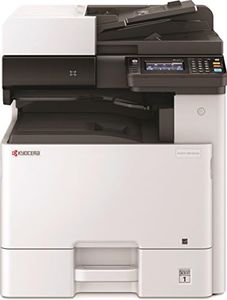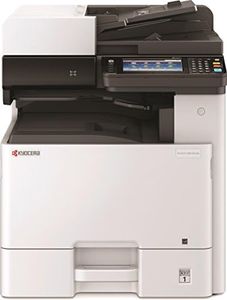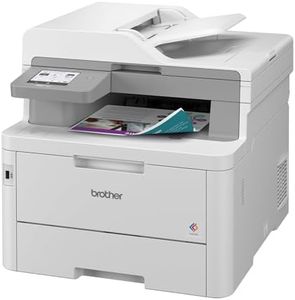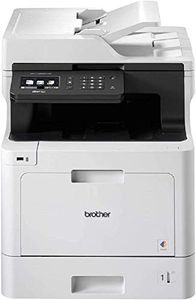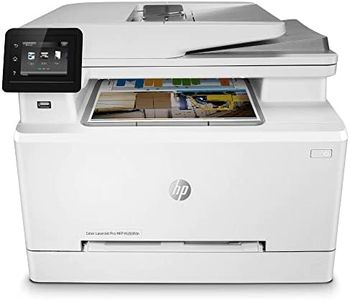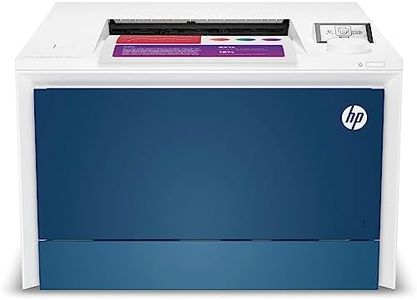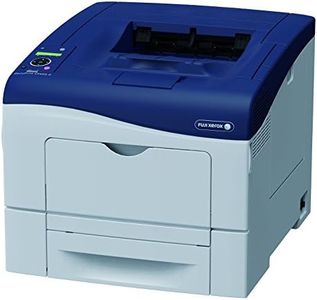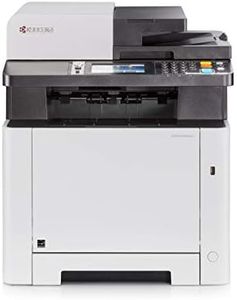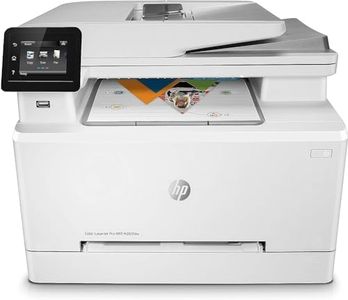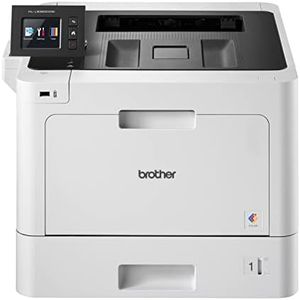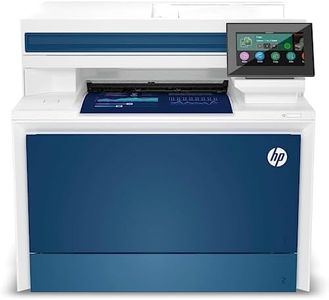We Use CookiesWe use cookies to enhance the security, performance,
functionality and for analytical and promotional activities. By continuing to browse this site you
are agreeing to our privacy policy
10 Best Color Laser Printers
From leading brands and best sellers available on the web.Buying Guide for the Best Color Laser Printers
Choosing a color laser printer can feel overwhelming because of the range of options and features available. To find the best fit for you, it's helpful to think about how you'll use the printer—whether it's for home, office, or creative tasks—and what qualities matter most, like print speed, print quality, and connectivity. Understanding the main specifications will help you pick a printer that matches your daily needs and gives you the performance you expect.Print Speed (Pages Per Minute - PPM)Print speed, measured in pages per minute (PPM), tells you how many pages a printer can produce in one minute. This spec is important, especially in busy environments where you need to print large documents quickly. Lower print speeds (under 20 PPM) are usually fine for light home use or occasional printing. Mid-range speeds (20-30 PPM) suit small offices or frequent users, providing a good balance of speed and practicality. High speeds (over 30 PPM) are best for larger offices or people who regularly handle high-volume printing. You should estimate how often you print and whether waiting for printouts would be inconvenient to decide on the right speed for your needs.
Print Resolution (DPI)Print resolution, measured in DPI (dots per inch), refers to the level of detail and sharpness in the printed images or text. Higher resolution means crisper, more detailed prints, which matters most for graphics-heavy documents, photos, or any work requiring professional quality. Basic resolution (600 x 600 DPI) is sufficient for most text documents. If you print presentations, marketing materials, or photos, consider mid- to high-range resolutions such as 1200 x 1200 DPI. Your best choice depends on how much you value detailed graphics versus simple text output.
Connectivity OptionsConnectivity refers to how you connect and send documents to your printer. The most common types are USB (directly to a computer), Ethernet (for a wired network), and Wi-Fi (wireless printing from multiple devices). Some printers also allow printing directly from mobile apps or cloud services. If you print from a single computer, USB may suffice, but for households or offices with many users and devices, wireless or Ethernet connectivity provides greater convenience and flexibility. Matching your printer's connectivity to your typical usage environment ensures smooth operation.
Paper Handling (Input/Output Capacity & Supported Sizes)Paper handling covers how many sheets the printer can hold and what paper sizes and types it supports. Input capacity (tray size) affects how often you'll need to reload paper, while output capacity determines how many pages the printer can hold after printing. Smaller trays (100-150 sheets) are fine for light users; mid-range trays (150-250 sheets) suit regular users, and larger trays (over 250 sheets or extra trays) are ideal if you print large volumes. If you print on different paper types (labels, envelopes, card stock), check that the printer supports these. Always consider both how much you print and the kinds of media you might need.
Monthly Duty CycleMonthly duty cycle indicates the maximum number of pages a printer is designed to handle per month without premature wear. A higher duty cycle means the printer is built for more frequent or demanding use. For personal use or small offices, a monthly duty cycle of a few thousand pages is enough. For busier offices with high print demands, look for models rated for higher volumes—tens of thousands of pages per month. Pick a duty cycle that comfortably exceeds your expected monthly print volume for long-lasting device performance.
Operating Costs (Toner Yield/Efficiency)Operating costs in laser printers largely depend on the efficiency and yield of toner cartridges—the number of pages you can print before replacing the toner. Cheaper printers sometimes have low-capacity cartridges that need frequent replacements, increasing long-term costs. High-yield toner cartridges print more pages and reduce how often you need to buy replacements, which is cost-effective over time, especially if you print often. Consider the estimated cost-per-page and how many pages a cartridge will yield to help you choose a printer that fits your printing habits.
Size and Noise LevelThe physical size and noise level of a printer can impact your workspace, especially if it's going in a quiet room or a small office. Compact printers fit tighter spaces and are easier to move, while larger ones may offer extra features but need more room. Noise level, usually measured in decibels, is crucial in quiet environments: some models are much quieter than others, making them better for shared or home settings. Think about where your printer will be placed and if noise or space is an issue, and choose accordingly.
